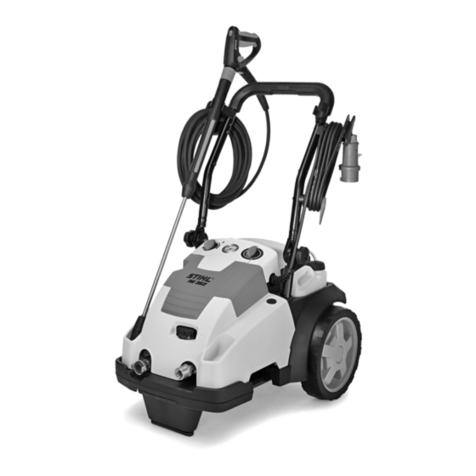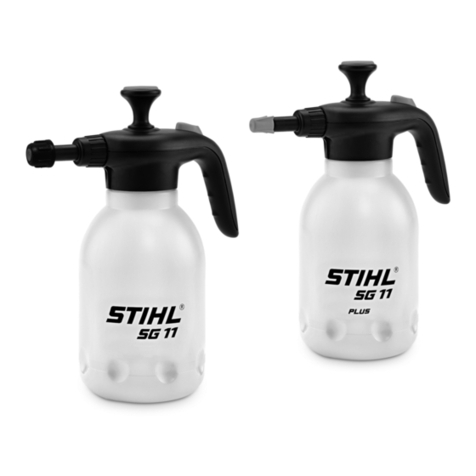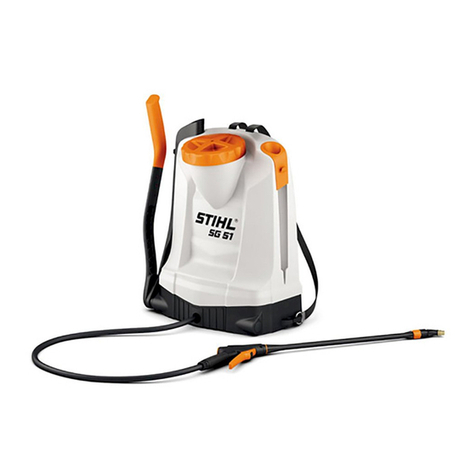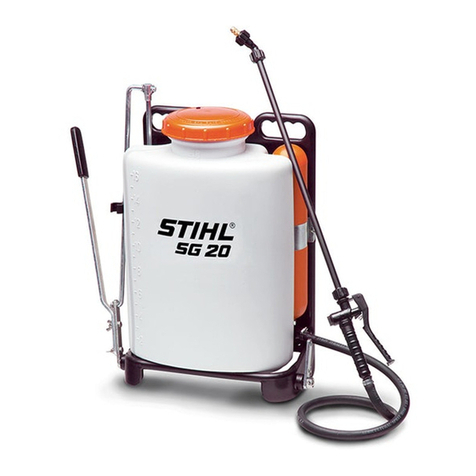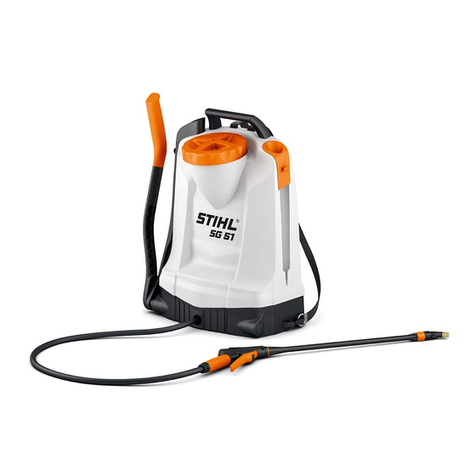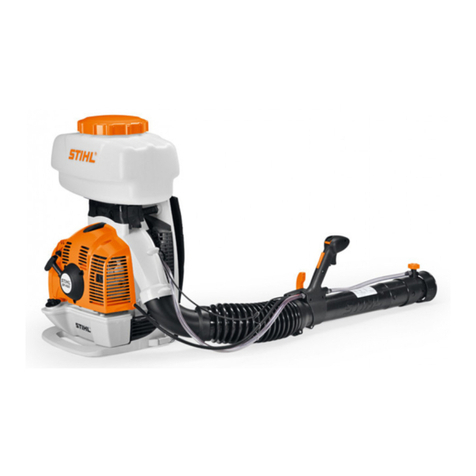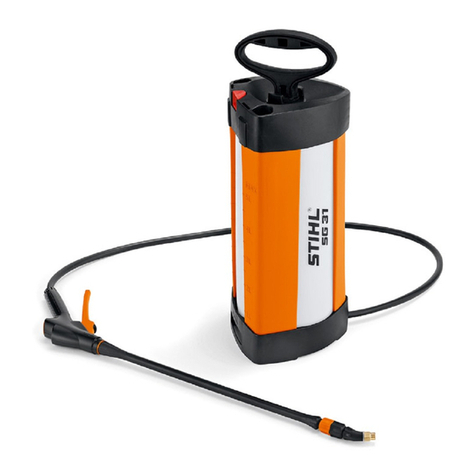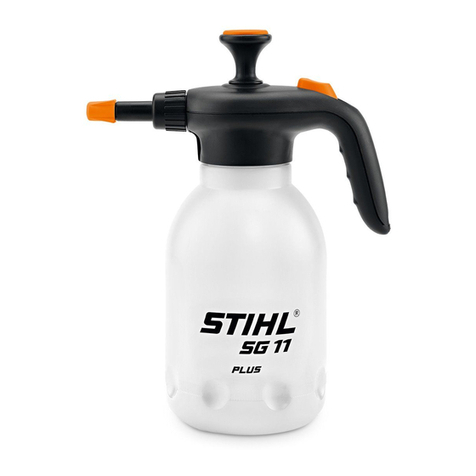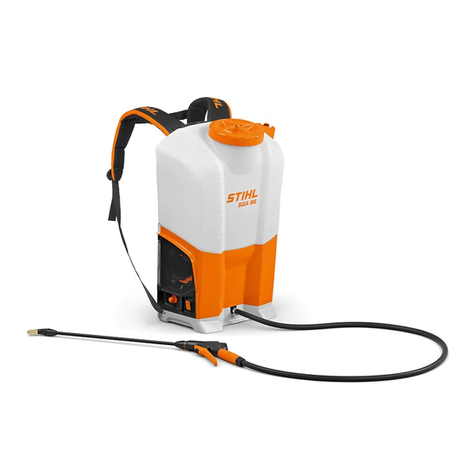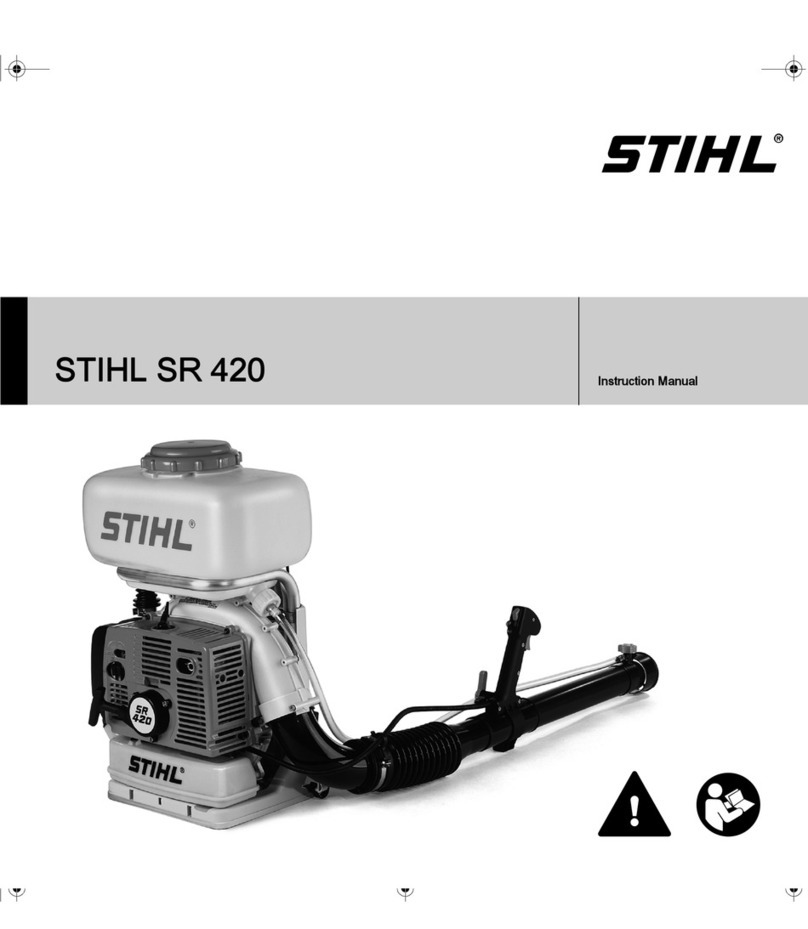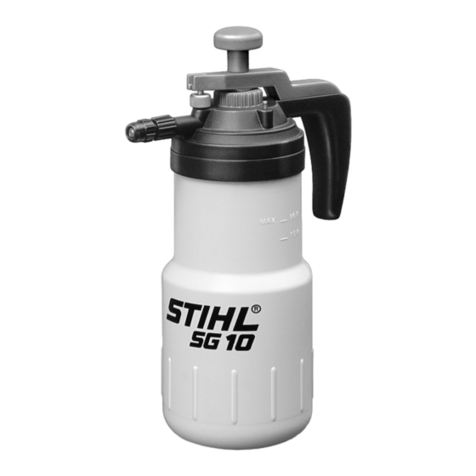
Watch out for obstacles: Be careful of refuse,
tree stumps, roots and ditches which could
cause you to trip or stumble
Be particularly alert and cautious when wearing
hearing protection because your ability to hear
warnings (shouts, alarms, etc.) is restricted.
Take breaks when you start getting tired or feel‐
ing fatigue – risk of accidents!
Work calmly and carefully – in daylight conditions
and only when visibility is good. Proceed with
caution, do not put others in danger.
Do not work on a ladder or in unstable locations.
When working in open ground and gardens take
special care to avoid harming small animals.
To reduce the risk of electrocution, never operate
this power tool in the vicinity of live wires or
power cables.
Always clean the spray container and hose sys‐
tem before changing to a different plant protec‐
tion product.
As soon as the engine is running, the
power machine generates toxic
exhaust gas.As soon as the engine is
running, the power machine gener‐
ates toxic exhaust gas. These gases
may be odorless and invisible and
may contain unburned hydrocarbons
and benzene. Never work with the
machine in closed or poorly ventilated
rooms.
To reduce the risk of serious or fatal injury from
breathing toxic fumes, ensure proper ventilation
when working in trenches, hollows or other con‐
fined locations.
Stop work immediately if you start suffering from
nausea, headaches, impaired vision (e.g. your
field of vision gets smaller), impaired hearing,
dizziness, or impaired concentration – these
symptoms may possibly be the result of too-high
exhaust gas concentration – Risk of accidents!
Operate your power tool so that it produces a
minimum of noise and emissions – do not run the
engine unnecessarily, accelerate the engine only
when working.
To reduce the risk of fire, do not smoke while
operating or standing near your power tool. Com‐
bustible fuel vapor may escape from the fuel sys‐
tem.
If your power tool is subjected to unusually high
loads for which it was not designed (e.g. heavy
impact or a fall), always check that it is in good
condition before continuing work – see also
"Before Starting". Check the fuel system for
leaks and make sure the safety devices are
working properly. Do not continue operating your
power tool if it is damaged. In case of doubt, con‐
tact a dealer.
2.13 After finishing work
Close the valve lever.
Always shut off the engine before taking the
power tool off your back.
After finishing work, put the power tool down on
a level, non-flammable surface. Do not place the
machine near easily flammable materials (e.g.
wood chips, bark, dry grass, fuel) – risk of fire!
Check all parts of the power tool for leaks.
After finishing work, thoroughly clean the power
tool and wash your hands, face and, if neces‐
sary, your clothes.
Keep other people and animals away from the
areas that have been sprayed and do not walk
on them until the plant protection chemical has
dried.
2.14 Vibrations
Prolonged use of the power tool may result in
vibration-induced circulation problems in the
hands (whitefinger disease).
No general recommendation can be given for the
length of usage because it depends on several
factors.
The period of usage is prolonged by:
–Hand protection (wearing warm gloves)
–Work breaks
The period of usage is shortened by:
–Any personal tendency to suffer from poor cir‐
culation (symptoms: frequently cold fingers,
tingling sensations).
–Low outside temperatures.
–The force with which the handles are held (a
tight grip restricts circulation).
Continual and regular users should monitor
closely the condition of their hands and fingers. If
any of the above symptoms appear (e.g. tingling
sensation in fingers), seek medical advice.
2.15 Maintenance and Repairs
Service the machine regularly. Do not attempt
any maintenance or repair work not described in
2 Safety Precautions and Working Techniques English
0458-372-0121-C 7






